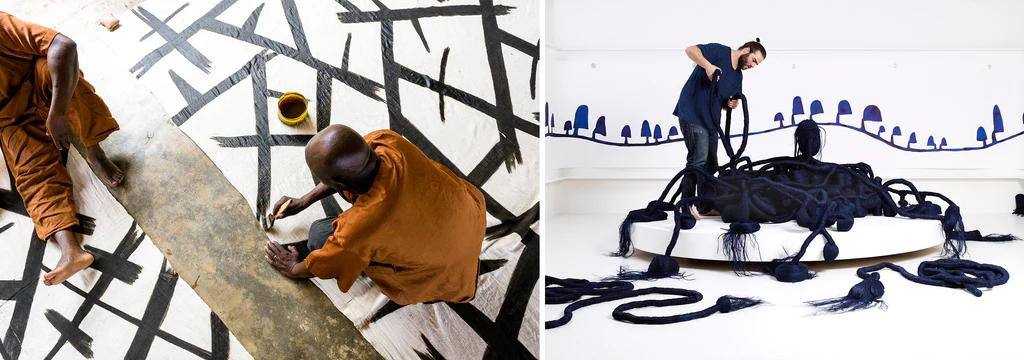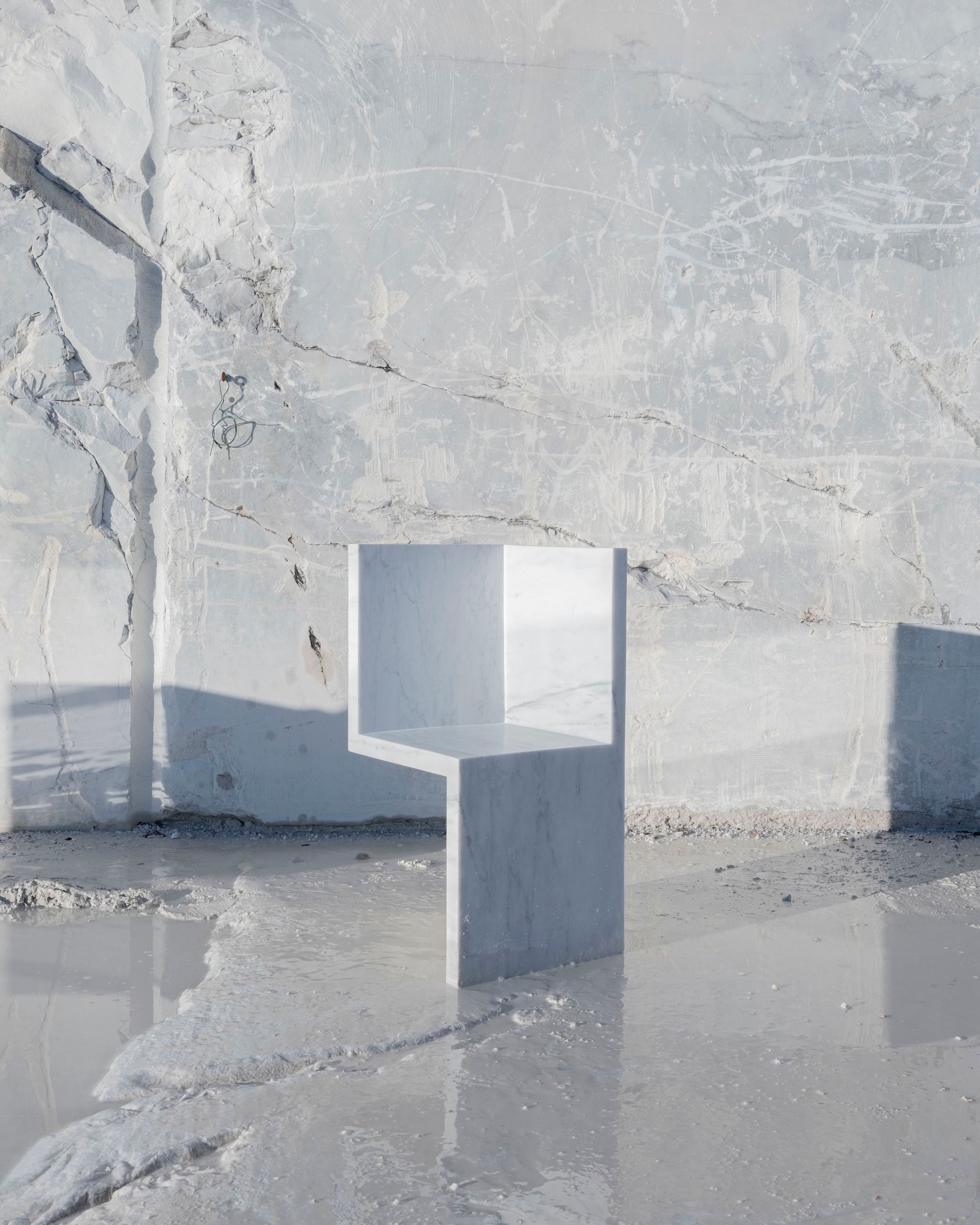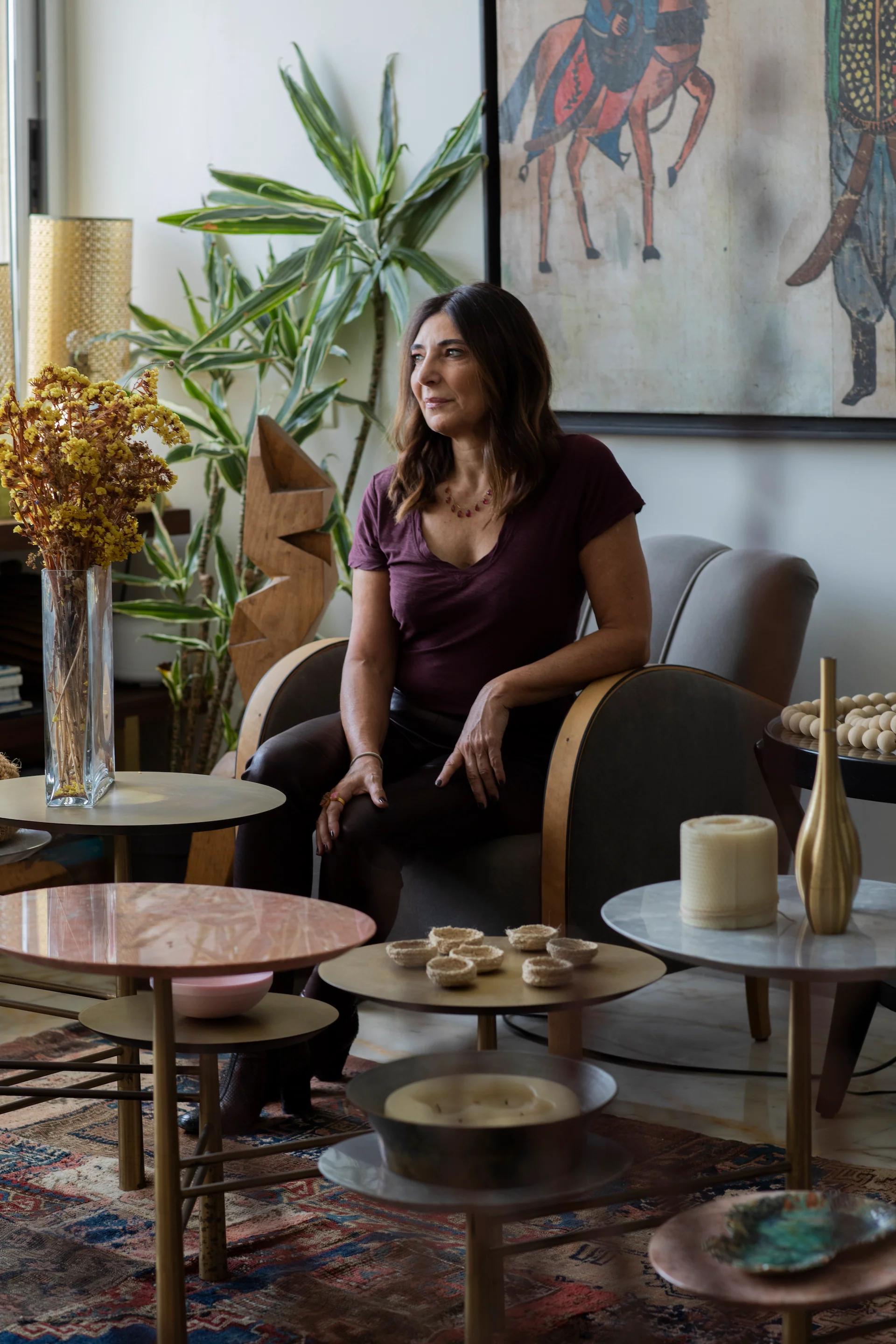CURRICULUM VITAE JUNE 30 2020
by Design Miami
How Trevyn McGowan of Cape Town's Southern Guild helped catalyze the burgeoning South African design scene
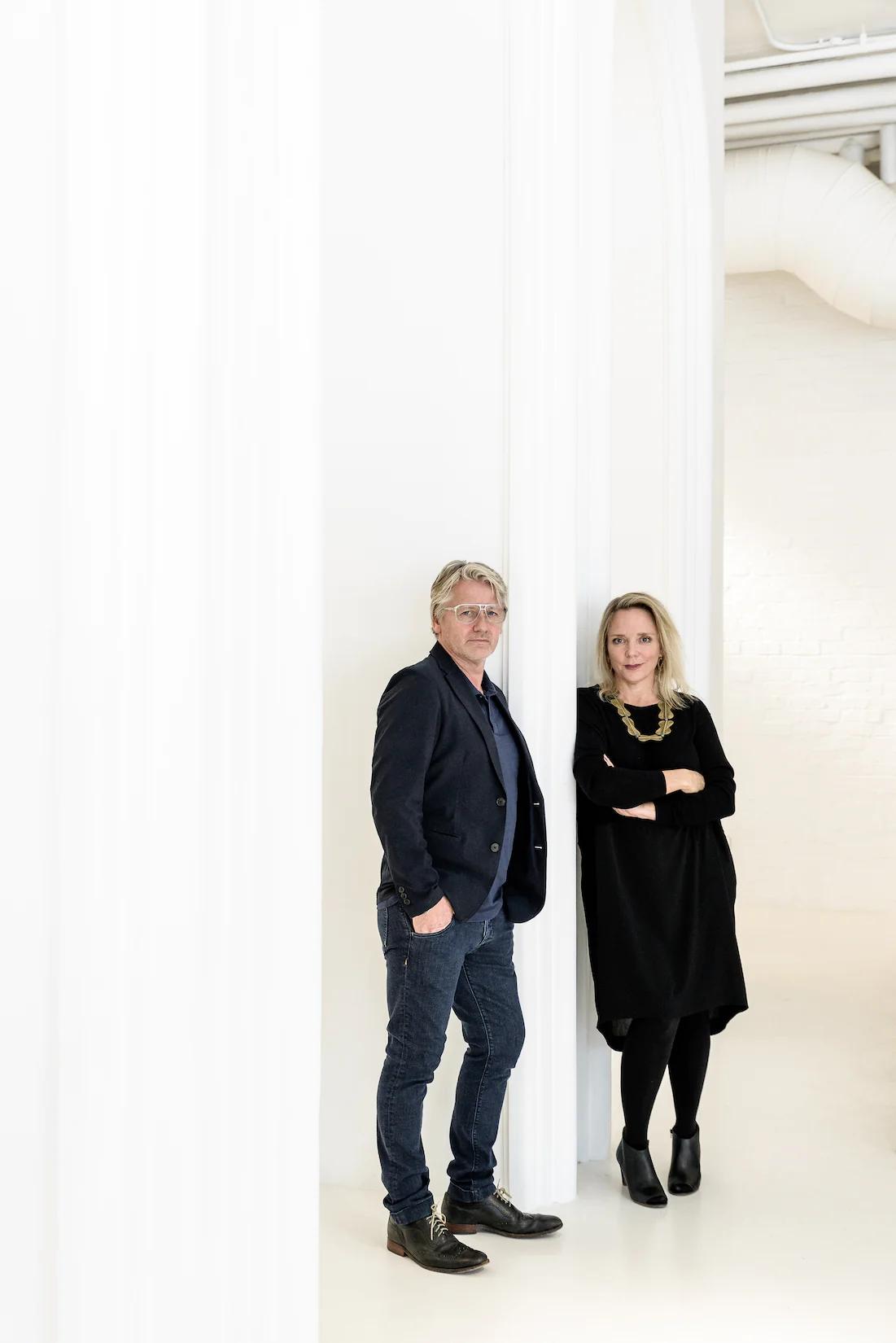
JULIAN & TREVYN MCGOWAN OF SOUTHERN GUILD
Trevyn McGowan is best known in the Design Miami/ world for Southern Guild, the Cape Town gallery she founded with her husband Julian. But Southern Guild is just one part of a story that has taken the indefatigable gallerist from her early days as a London theater actress to a series of visionary design businesses that have helped reshape the design landscape in her native South Africa.
Taking time away from her work, and five children, McGowan shares her journey and the insights she's gained along the way.
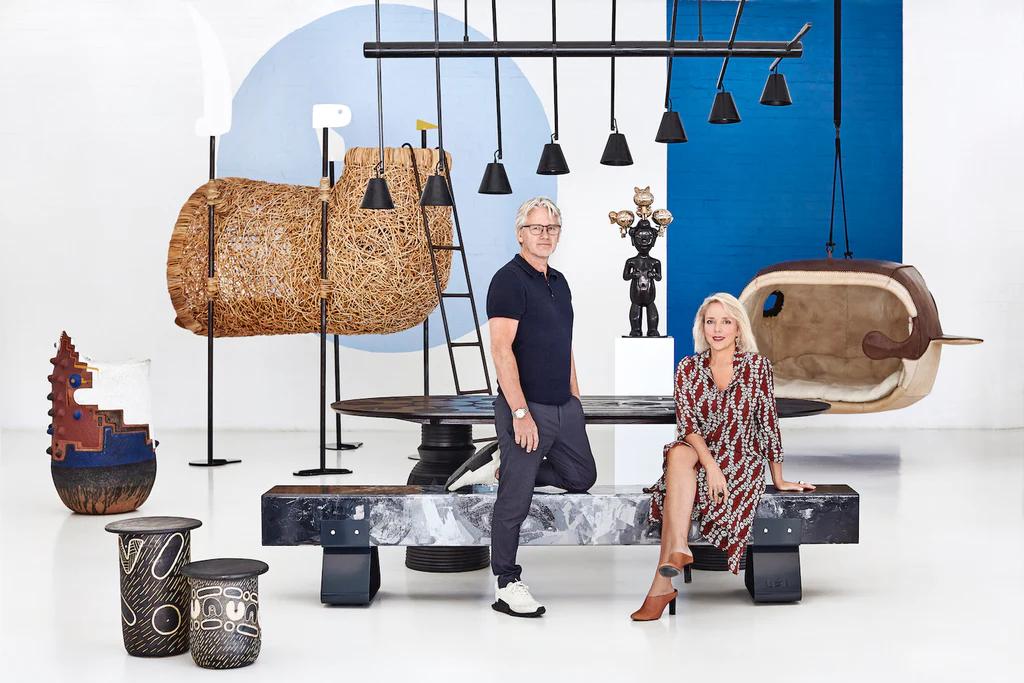
JULIAN & TREVYN MCGOWAN
Design Miami/How did you and Julian meet?
Trevyn McGowan/Although I'm originally from South Africa, I studied and lived in London for 20 years. I was an actress, and Julian—born in Manchester—was a set designer there. We knew each other in the industry for several years before suddenly realizing we were meant to be together—on the Millennium New Year’s Eve.
DM/How did you get into design? Can you start from the beginning?
TMG/I had an interiors and architectural practice called Site Specific in Clerkenwell and frequently sourced design pieces from South Africa. By 2003, Julian and I had started a family, and on a trip back to South Africa—on the spur of the moment—we bought a house on a beach and moved to a tiny village called Wilderness.
We understood what was happening in South African design wasn’t happening anywhere else and that a conduit was needed to help establish, frame, and showcase it to the rest of the world. We opened Source, the primary export agency for artisanal South African homeware to major international retailers like The Conran Shop, Anthropologie, West Elm, ABC Carpet & Home, Restoration Hardware, and others. Southern Guild grew organically out of our interactions with local designers and artists, whose work we were fascinated by but that didn’t fit the category of functional homeware.
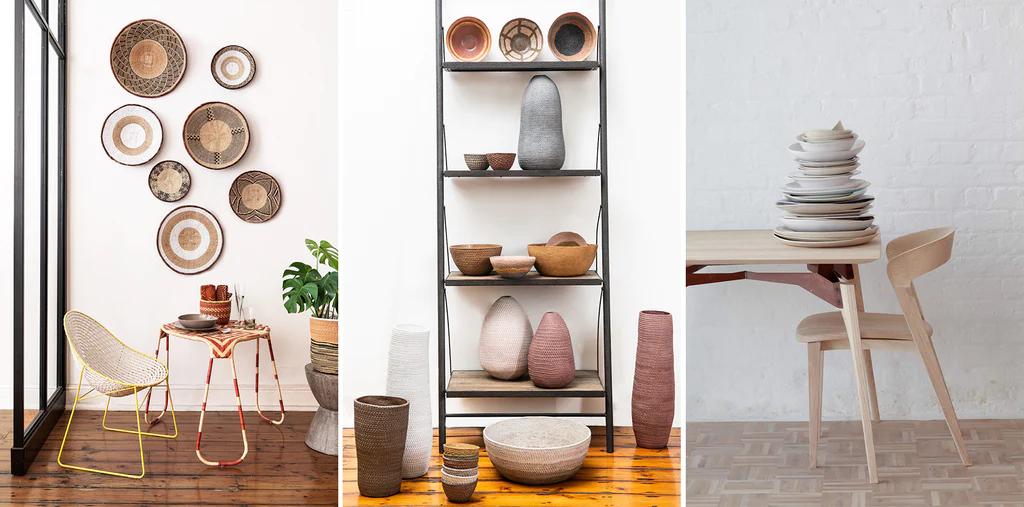
SOURCE BASKETS, POTTERY, AND TABLEWARE
DM/When did you open Southern Guild?
TMG/In 2008, we saw the need for a platform to provoke new limited-edition work and to showcase it collectively on the national and international design stage. We presented as annual collections under the “Southern Guild” moniker at local art fairs and other venues. We were the first African gallery to be invited to show at Design Miami/ in 2011 and at Christie’s London’s annual design auction in 2015. We have since shown regularly at Design Miami/ in the US and Basel and have participated in PAD London, The Salon Art & Design and Collective in New York, and at Design Days Dubai.
In 2015, we opened our first gallery in the Woodstock design district in Cape Town, and in June 2017, we moved to our current location in the Silo District of the V&A Waterfront, near the new Zeitz Museum of Contemporary Art Africa. Over the past five years, we have collaborated with numerous international platforms, partnering with New York City-based galleries R & Company, Friedman Benda, and Todd Merrill to show some of our artists’ work. We are on the radars of museums around the world, with pieces in the permanent collections of the National Gallery of Victoria in Melbourne and the Los Angeles County Museum of Art. Our work has also been showcased in exhibitions at the Vitra Design Museum and Cooper Hewitt Smithsonian Design Museum.
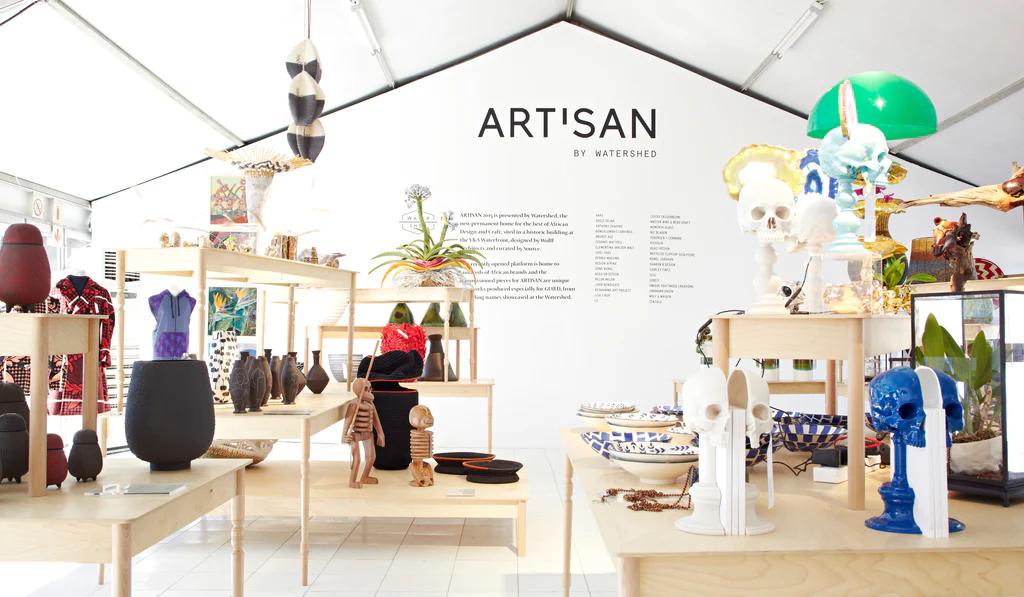
ARTISAN INSTALLATION AT THE V&A WATERFRONT MARKET
DM/What businesses do you run alongside Southern Guild? How are they positioned in the larger design landscape?
TMG/We grew very quickly after establishing Source, and at one point operated 11 different brands and sub-brands, including Design Network Africa, which we coordinated on behalf of the Danish government; the Business of Design conference; and the GUILD Design Fair, which took place in 2014 and 2015 in Cape Town. We helped establish and still curate the Watershed Market at the V&A Waterfront, founded the not-for-profit Design Foundation, and launched Work Shop New Town in downtown Johannesburg. This all began when the local design market was in its infancy and there was a profusion of opportunities and energy needed to create commercial platforms, upskilling, and industry development. We stepped in whenever we saw a need.
After 17 years in the industry, we have now become more streamlined to focus on the growth of Southern Guild. Our export company, Source, still supplies authentic artisanal products. And beside these two official hats, there are a few others that are a natural extension of the work we do in both companies. We work in an advisory capacity with many clients and manage large-scale interior projects providing a turnkey service.
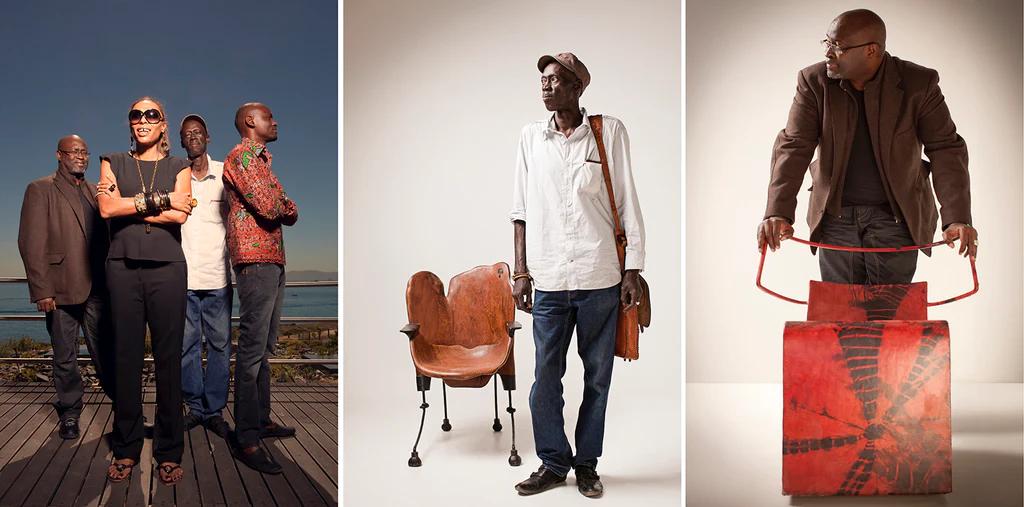
DESIGN NETWORK AFRICA DESIGNERS: ADELE DEJAK, HAMED OUATTARA, BABACAR NIANG, CHEICK DIALLO
DM/What is a common theme among the designers you represent?
TMG/They work with layered narratives, mined from their own unique biographies and cultures, often reclaiming or reframing in a synchronic way.
DM/One of our favorite designers that you feature at Design Miami/ is Porky Hefer. How did you meet?
TMG/Porky had a company called Animal Farm that produced tiny runs of ironic, socio-political design pieces. For our very first Southern Guild showcase, at the Joburg Art Fair in 2009, we invited 32 of the country’s most interesting designers and artists to make their wildest, most ambitious work. We sat with Porky pouring over half a dozen sketch books jammed with concepts of countless ideas. We chose an intricate drawing of a hanging nest, the birth of an incredible, ongoing body of work.
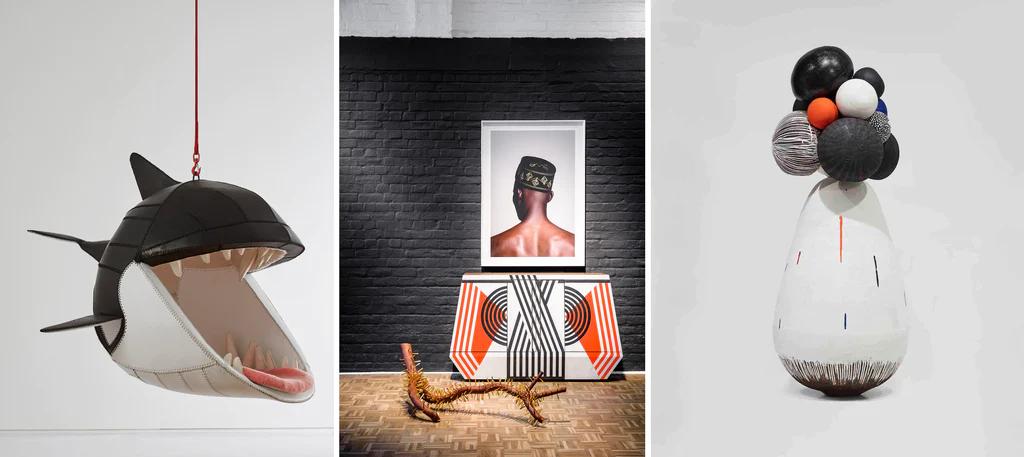
PORKY HEFER/ FIONA BLACK FISH | DOKTER & MISSES/ ALL WILL BE WELL | SANELL AGGENBACH/ SPINIFERLICTUS
DM/What is the first piece of collectable design you acquired?
TMG/A 13-foot Gregor Jenkin steel dining table, which we still eat at as a family every night. With five kids, we needed the length! We began our Southern Guild international journey at Design Miami/ in 2011 with a solo showing of Gregor’s work. It was an ambitious debut—a single purchase price for the entire booth—a series of steel tables folded and turning and representing cattle migrating on the Highveld.
DM/How would you characterize your typical collector?
TMG/They’re brave and intrepid collectors who lead and who understand early on the freshness and value of our work. They have the foresight that the pieces’ value will grow over time. Just over half of our clients are international—spread all over the world from Dubai and Sydney to Miami and Cologne. The rest are South African. They all instinctively respond to the work on an emotional and physical level, as South African design is rich in narrative, handmade, and totally unlike anything they’ve seen before.
DM/What trends do you see in the market?
TMG/We see two distinct, interrelated trends that have become even further heightened by the current pandemic: collectors being driven more by a visceral connection to the work rather than by a clinical appreciation of it as an investment and an appreciation for work that finds original ways of working with organic materials. Both are born of a time during which humans feel an unprecedented level of fragility.
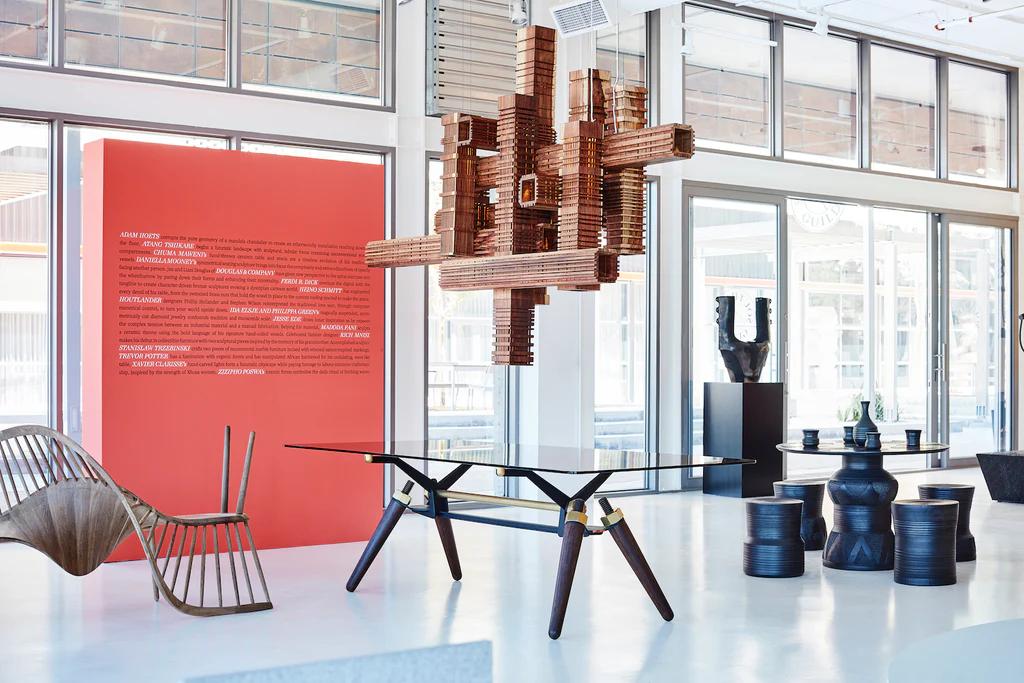
EXTRA ORDINARY EXHIBITION AT SOUTHERN GUILD
DM/What do you see for the future of design?
TMG/More rigorous scrutiny from both designers and buyers. The health pandemic is forcing us all to question how we live and consume and [to think about] what part we can play in creating a safer, more humane world. Designers will approach their work with this in mind, as they seek to solve problems for the collective good, use their own and the Earth’s resources more economically, and inculcate a spirit of critical thinking in their audience.
We are living through a historic period, and design has always been about responding to and reflecting its moment in time. Also we are at home more than ever, and what we surround ourselves with should truly inspire us and have longevity and legacy—heirlooms for our children.
DM/What is on your acquisition wish list?
TMG/—Isangqa by Madoda Fani: giant, weighty, and hand-carved with a deep stain
—Scrap Poly Console (Red) by Max Lamb: textured, witty, bold
—Copper Chaise III by Conrad Hicks: a sensuous, organic ribbon
—Nalgona Chair by Chris Wolston: a cane hug
—Tjips by Dokter and Misses: techno, inner-city, precise

MADODA FANI/ ISANGQA | CONRAD HICKS/ COPPER CHAISE III | DOKTER AND MISSES/ TJIPS | MAX LAMB/ SCRAP POLY CONSOLE | CHRIS WOLSTON/ NALGONA CHAIR
DM/What advice do you have for gallerists and dealers in the current market?
TMG/It sounds almost contradictory, but be as lean and as streamlined as you can while also thinking very big. Use every digital and online means at your disposal to get your artists’ work out into the world. Make sure this is done in an authentic, engaging way that respects the integrity of the artists’ stories.
We are fortunate that we deal in objects that cross geographical and language divides and can be showcased using beautifully produced digital content. I also think that reaching your audience in a genuine exchange is far better than loud and overbearing general communication. This is a time for subtle intimacy.
DM/What plans do you have in store for Southern Guild?
TMG/One of the largest and most remarkable projects we have ever worked on is in collaboration with Red Carnation Hotels on their new Xigera Safari Lodge in the Okavango Delta, which launches later this year. We will shortly be able to announce a significant international museum commission opening at the end of 2020. And we are working towards a major dynamic West African show next year, including designers Cheick Diallo, Hamed Ouattara, and Jean-Servais Somian.
DM/And lastly, we would love to know: what is your fondest Design Miami/ memory?
TMG/Meeting the fabulous Ewan McEoin there in 2016 and concluding our first acquisition for our favorite museum, the National Gallery of Victoria [where McEoin is Senior Curator]: Porky Hefer’s Killer Whale Fiona Blackfish.
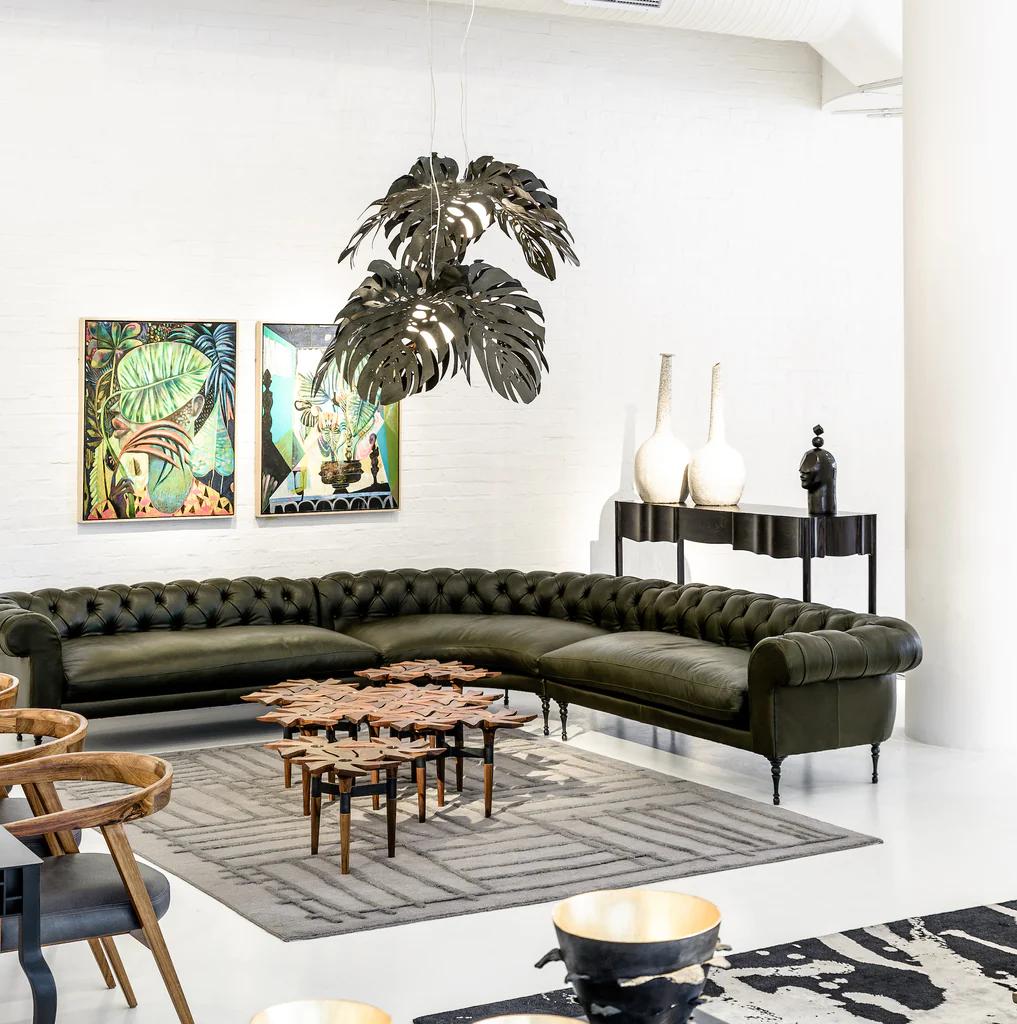
GUILD STUDIO
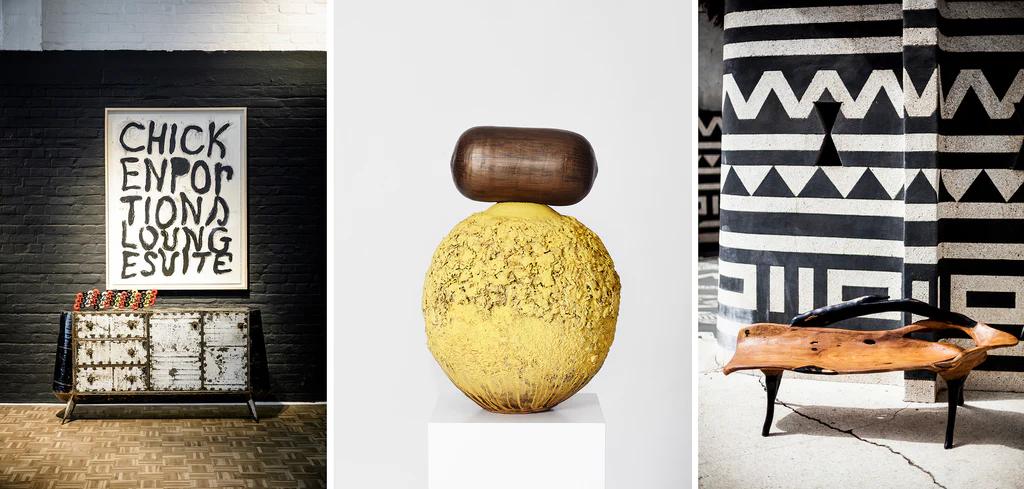
CAMERON PLATTER, HAMED OUATTARA, AND PAUL EDMUNDS/ DNA WORKS | ZIZIPHO POSWA/ UMTHWALO 1 | BABACAR NIANG/ CARVED BENCH
